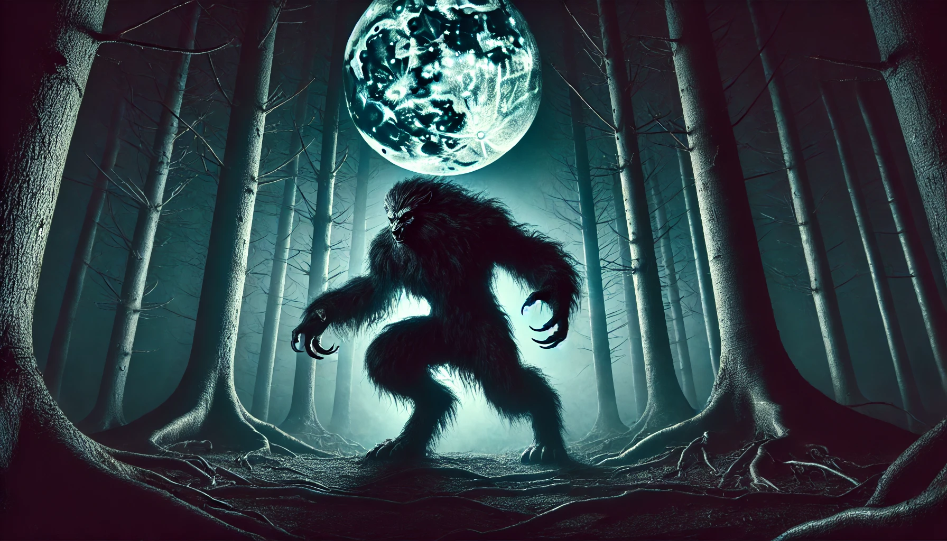The Howling Appeal of Werewolf Fiction: Exploring the Werewolf Story Genre and Must-Read Werewolf Books
-
Richard Pen
| Monday 12th of August 2024 10:20:16 AM (UTC)

The werewolf fiction genre has long captivated readers with its blend of primal fear, transformation, and the duality of human nature. From ancient folklore to modern urban fantasies, werewolf stories offer a unique exploration of the beast within, often serving as metaphors for our own struggles with identity and control. In this article, we delve into the enduring allure of werewolf fiction, its evolution in literature, and highlight some essential werewolf books that have defined the genre.
The Origins of Werewolf Fiction
Werewolf legends can be traced back to ancient times, with tales of shape-shifting humans appearing in cultures worldwide. These myths often centered around themes of transformation, punishment, and the struggle between the civilized and the savage. However, it wasn’t until the 19th and 20th centuries that werewolves became a staple of horror literature.
One of the earliest literary references to werewolves is found in the French novel The Werewolf of Paris by Guy Endore, published in 1933. This novel set the tone for werewolf fiction, combining elements of horror, romance, and psychological drama. Over time, werewolf stories evolved, reflecting society's changing fears and fascinations, much like their vampire counterparts.
The Evolution of Werewolf Books
Werewolf fiction has undergone significant transformation over the years. Early depictions of werewolves often portrayed them as monstrous, uncontrollable beasts—a symbol of humanity’s darker side. However, modern interpretations have introduced more nuanced characters, exploring the psychological aspects of transformation and the moral dilemmas faced by those who live between two worlds.
In contemporary literature, werewolves are often depicted as tragic figures, struggling to reconcile their human and animalistic instincts. This evolution mirrors the broader trend in supernatural fiction, where monsters are no longer simply villains but complex characters with their own stories to tell.
Why Werewolf Books Remain Popular
The ongoing popularity of werewolf fiction can be attributed to several compelling factors:
- Themes of Transformation: Werewolf stories resonate with readers because they explore themes of transformation and identity. The idea of losing control and becoming something other than oneself is a powerful metaphor for the struggles we all face.
- Human vs. Beast Dichotomy: Werewolf fiction often delves into the tension between our civilized selves and our primal instincts. This duality creates rich narrative opportunities, allowing authors to explore deep psychological and emotional conflicts.
- Versatile Storytelling: Like vampire fiction, werewolf stories can be adapted to a variety of genres, from horror and fantasy to romance and thriller. This versatility ensures that werewolf fiction remains fresh and exciting for readers.
- Cultural Reflection: Werewolf stories often reflect societal anxieties about the unknown and the uncontrollable. Whether it’s fear of the wilderness, the unknown, or the loss of control, werewolf fiction speaks to universal human concerns.
Must-Read Werewolf Books
For those looking to sink their teeth into the werewolf genre, here are some must-read werewolf books that have left a lasting impact:
- The Werewolf of Paris by Guy Endore: Often considered the seminal werewolf novel, this book blends horror with historical fiction, exploring themes of war, madness, and transformation.
- Sharp Teeth by Toby Barlow: A modern, free-verse novel that presents a unique take on werewolves living in contemporary Los Angeles. It’s a gritty, poetic exploration of loyalty, pack mentality, and survival.
- The Wolf’s Hour by Robert R. McCammon: A thrilling blend of werewolf fiction and World War II espionage, this novel follows a British secret agent who also happens to be a werewolf.
- Bitten by Kelley Armstrong: The first book in the Women of the Otherworld series, Bitten introduces a strong female werewolf protagonist, blending romance, action, and supernatural intrigue.
- Moonlit Rebellion: A Captivating Werewolf Tale: A gripping story that explores the dynamics of a werewolf pack and the rebellion that changes their world. Moonlit Rebellion is a must-read for those who enjoy a fresh take on werewolf lore.
Conclusion
The werewolf story genre continues to captivate readers with its powerful themes of transformation, identity, and the human struggle between civility and savagery. Whether you're drawn to the raw horror of classic werewolf tales or the nuanced explorations of modern fiction, there’s a werewolf book out there for every reader. As this genre continues to evolve, it remains a testament to our enduring fascination with the unknown and the wild.
For readers who enjoy exploring supernatural genres, be sure to check out our article on The Enduring Allure of the Vampire Story Genre: A Deep Dive into Vampire Books. Discover how vampire and werewolf stories share common themes yet offer unique perspectives on the human condition.
Start the conversation
Become a member of TxtTale to start commenting.
Already a member?
